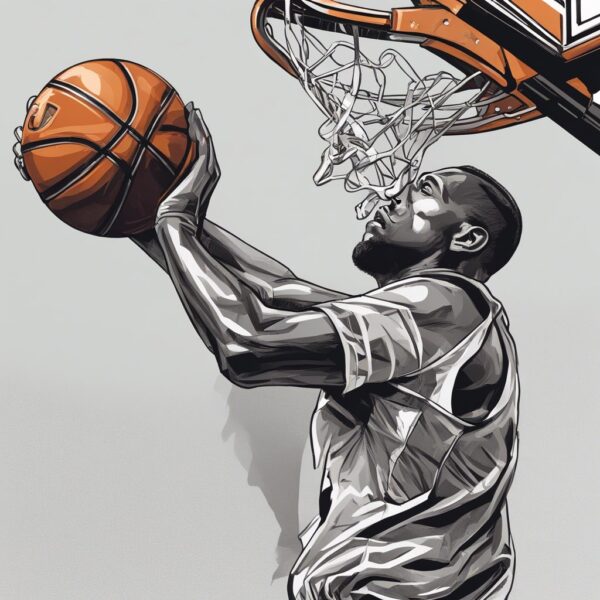How To Boost Rim Reach Accuracy: 7 Expert Tips
To boost your rim reach accuracy, start by prioritizing calibration to maintain peak brake performance and prevent safety hazards from inaccurate measurements leading to brake rub.
Consistency in your approach guarantees accurate measurements by using the same technique for balanced wheels and avoiding uneven truing results.
Utilize digital tools, like spoke tension meters, for precise measurements and immediate adjustments, resulting in a more reliable wheel.
Understanding measurement variability is essential for peak brake performance, while mastering the proper technique with a spoke wrench ensures a smoother ride and reliable wheel.
Avoid common mistakes like over-tightening spokes to prevent rim damage and maintain top wheel performance. Implement these expert tips to enhance brake performance and safety on your bike.
Key Takeaways
- Use digital truing tools for precise measurements.
- Maintain consistent technique for accurate results.
- Master proper spoke tension for even wheel balance.
- Avoid common mistakes like over-tightening spokes.
- Understanding measurement variability ensures optimal performance.
Importance of Calibration
Guaranteeing proper calibration of your measuring tools is crucial for sustaining peak brake performance and preventing safety hazards.
The Ultimate Guide highlights the significance of routine calibration to keep your braking system in top shape.
Precise rim reach measurements are necessary to prevent brake rub and ensure consistent braking power when you need it most.
Inaccurate measurements can result in brake issues and potential safety hazards that could have been prevented with properly calibrated tools.
Consistency in Approach
To maintain peak brake performance and guarantee accurate rim reach measurements, consistency in approach is key when truing your wheels.
Consistency means using the same technique and method every time you work on your wheels. By staying consistent, you assure that your adjustments are uniform, helping maintain the overall balance of the wheel. This approach leads to more accurate and reliable truing outcomes.
If you deviate from a consistent approach, you risk uneven truing results and potential issues with wheel stability.
Practice consistency in your truing process to improve your skills and efficiency over time.
Utilizing Digital Tools
When truing your wheels, incorporating digital tools such as spoke tension meters and digital truing stands can greatly enhance the precision and reliability of your rim reach measurements.
These tools provide accurate feedback for achieving ideal tension in each spoke, resulting in a stronger and more reliable wheel.
With real-time feedback, digital truing tools enable immediate adjustments to improve rim reach accuracy.
Understanding Measurement Variability
Understanding the variability in rim reach measurements is essential for optimizing brake performance and ensuring rider safety.
To grasp this concept effectively, consider the following:
- Impact on Brake Performance: Measurement discrepancies can affect how your brakes function, potentially leading to issues like uneven pad wear or reduced stopping power.
- Importance of Accuracy: Accurate measurements are key for aligning brake pads correctly and maintaining proper clearance, which directly impacts braking efficiency.
- Consistency for Safety: Inconsistent measurements can result in unpredictable braking behavior, posing a safety risk for riders on the road.
- Achieving Precision: By understanding measurement variability, you can work towards achieving consistent and precise rim reach measurements for dependable braking performance.
Proper Technique for Rim Reach
Mastering the proper technique for rim reach involves skillfully using a spoke wrench to adjust individual spokes’ tension. The key is to guarantee even tension across all spokes, creating a true and round wheel.
By adjusting each spoke correctly, you can eliminate lateral and radial runout, leading to a smoother ride. Improper technique may result in a wobbly wheel, impacting your bike’s performance and stability.
It’s essential to hone this skill for a well-balanced and reliable wheel. Remember, a balanced wheel contributes to a better riding experience and enhances your control over the bike.
Common Mistakes to Avoid
To guarantee peak performance and longevity of your wheel, steer clear of these common mistakes when adjusting your spokes for rim reach accuracy.
- Avoid over-tightening spokes: This can lead to rim damage and affect wheel strength.
- Be cautious of uneven tension: Uneven tension in spokes can cause the wheel to wobble or go out of true.
- Check for spoke wind-up: This mistake can affect the accuracy of rim reach.
- Ensure proper spoke alignment: Prevent lateral runout and maintain wheel stability by aligning spokes correctly.
Ongoing Monitoring and Adjustment
Consistently check your wheel’s trueness to guarantee peak performance and safety. Keeping an eye on the alignment of your wheel is essential for maintaining rim reach accuracy.
Make small adjustments to spoke tension as needed to make sure the wheel remains true. Utilize a truing stand or zip ties to accurately assess and correct any lateral wheel runout.
Additionally, spin the wheel to check for radial runout, adjusting spokes to maintain balance. Regular monitoring and adjustment of your wheel truing will help prevent potential issues and ensure a smooth ride.
Stay proactive in maintaining your wheel’s alignment to enjoy optimal performance and safety on your rides.
Monitoring and Adjustment Tips
| Regularly check wheel trueness | Make small adjustments to spoke tension |
| Use truing stand or zip ties | Check for lateral wheel runout |
| Spin wheel to check radial runout | Adjust spokes for balance |
Frequently Asked Questions
What Is the Difference Between 2x and 3x Lacing?
In 2x lacing, each spoke crosses two others, while in 3x lacing, each spoke crosses three others. 2x offers lateral stiffness and weight savings, 3x provides torsional stiffness and durability. Choose based on your needs and preferences.
What Is the 3x Spoke Lacing Pattern?
The 3x spoke lacing pattern involves crossing each spoke three times before reaching the rim, providing strength and stability. It evenly distributes tension throughout the wheel, making it popular for road and mountain bikes, ensuring durability.
What Is the Best Internal Rim Width for Gravel?
For excellent gravel riding, aim for an internal rim width around 21mm to 25mm. It’s the sweet spot, balancing stability and tire support. Wider widths offer better traction on rough terrain, while narrower ones suit speed demons.
How Do You Lace a Bike Wheel?
To lace a bike wheel, interweave spokes through the hub and rim in a specific pattern. Guarantee even tension on all spokes for strength. Different lacing patterns impact wheel durability. Understanding this process is vital for wheel customization and maintenance.
Conclusion
Now that you have learned these expert tips for boosting rim reach accuracy, you’re well-equipped to take your skills to the next level.
By focusing on calibration, consistency, utilizing digital tools, understanding variability, proper technique, avoiding common mistakes, and ongoing monitoring, you can achieve precision in your rim reach measurements.
Keep practicing and refining your approach to see improvement over time. Stay committed to these principles, and you’ll see results in no time.
Good luck on your rim reach journey!












